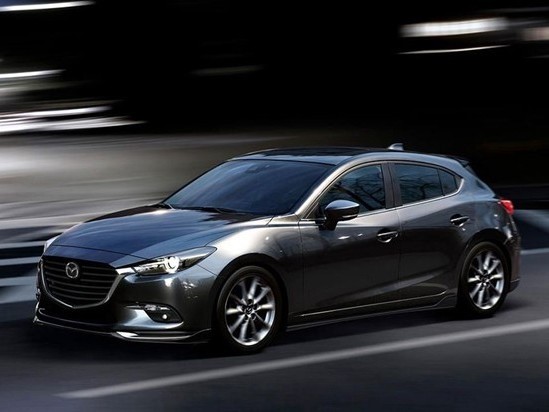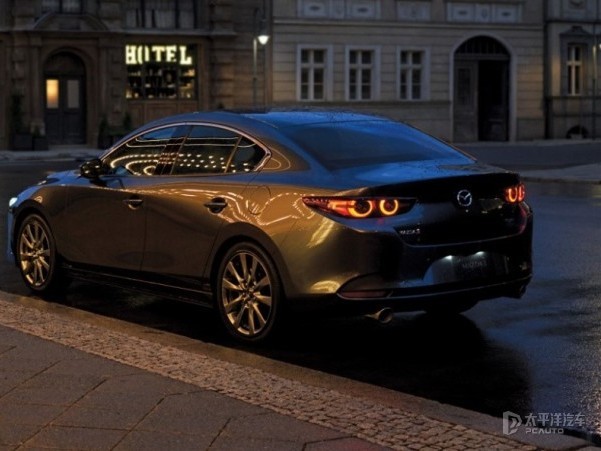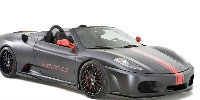Q
Which model year of the Mazda3 Hatchback is best?
Choosing the best year for the Mazda3 Hatchback depends on individual needs and preferences. If you're looking for value for money and proven technology, the 2019 model is a solid choice. It comes at a relatively affordable price, offers a rich set of features, and provides options for both 1.5 and 2.0-liter engines, all while including numerous standard safety systems that align well with everyday driving demands.
For those who prioritize having a newer vehicle with modern features, the 2023 model is worth considering. It continues the brand's tradition of exceptional handling and boasts a contemporary design both inside and out. This model also offers a 2.0-liter engine, achieving a good balance between fuel efficiency and power, while its features are designed to meet the daily comfort and driving needs of most users.
In summary, each model year has its unique strengths. It's advisable to gather detailed information on the different model years before making a purchase, and visiting a dealership for a test drive can provide invaluable insight.
Special Disclaimer: This content is published by users and does not represent the views or position of PCauto.
Related Q&A
Q
What Segment is Mazda 3 Hatchback?
The Mazda 3 Hatchback falls into the C-Segment (also known as compact cars segment) in the Malaysian market, sharing the same class as models like the Honda Civic and Toyota Corolla. This five - door hatchback is popular among young consumers for its dynamic design, refined interior, and excellent handling performance. The Skyactiv - technology engine it's equipped with strikes a balance between fuel efficiency and power output, making it suitable for both city driving and long - distance trips.
In Malaysia, C - Segment models are well - received for their combination of practicality and driving pleasure. The Mazda 3 Hatchback further enhances its competitiveness by offering a wide range of features such as a head - up display and a Bose audio system.
It's worth noting that when Malaysian consumers are making a purchase, they can compare the after - sales warranty policies and spare - parts availability of competing models in the same segment. At the same time, they should also consider their own needs regarding body size and trunk space. Although the hatchback design is stylish, its cargo - carrying capacity is slightly inferior to that of the sedan version. If you often need to carry a large amount of cargo, you may need to weigh the pros and cons.
Q
What is the Reslae Value of Mazda 3 Hatchback?
The Mazda 3 Hatchback has shown stable resale value in the Malaysian used - car market. This is mainly due to its outstanding design, reliable powertrain, and the brand's good reputation. Generally, a three - year - old used Mazda 3 Hatchback can retain 60% to 70% of its original price, depending on the vehicle's age, mileage, and maintenance condition. If the car has been well - maintained and has low mileage, its residual value could be even higher.
Mazda's Skyactiv technology has improved fuel efficiency and the driving experience, further enhancing its market competitiveness. Regular maintenance at authorized service centers and keeping complete records can also significantly increase the used - car value. Moreover, Malaysian consumers prefer Japanese cars for their high durability and low maintenance costs, which makes the Mazda 3 Hatchback quite popular in the used - car market.
For potential buyers, it is recommended to check the vehicle's accident history and repair records. At the same time, compare it with competing models of the same year, such as the Honda Civic or the Toyota Corolla Hatchback, to make a more comprehensive decision.
Q
How Many CC is Mazda 3 Hatchback?
The Mazda 3 Hatchback offers engine options in the Malaysian market, mainly including the 1.5-liter and 2.0-liter Skyactiv-G gasoline engines with displacements of 1496cc and 1998cc respectively. Both of these engines adopt Mazda's advanced Skyactiv technology, which focuses on balancing fuel efficiency and power output. The 1.5-liter version is suitable for daily commuting, while the 2.0-liter version can provide stronger power performance.
For Malaysian consumers, it's important to choose the right engine displacement according to their needs. Displacement not only affects power performance but also road tax and fuel economy. In Malaysia, road tax is calculated based on engine displacement; the larger the displacement, the higher the road tax. Thanks to the optimization of Skyactiv technology, these two engines can achieve good power output while also taking fuel economy into account.
The Mazda 3 Hatchback is very popular among young consumers for its excellent handling and Kodo design language. It's a popular hatchback model in the Malaysian market that combines sportiness and practicality, and it can handle both city driving and occasional long - distance trips.
Q
What is the Engine in Mazda 3 Hatchback?
The Mazda 3 Hatchback mainly offers two high - performance Skyactiv - G gasoline engine options in the Malaysian market, namely the 1.5 - liter and 2.0 - liter four - cylinder naturally aspirated engines. The 1.5 - liter version has a maximum output power of 114 horsepower, which is suitable for daily commuting and has excellent fuel economy. The 2.0 - liter version provides 156 horsepower, with more abundant power. It is also equipped with Mazda's unique Skyactiv - Vehicle Dynamics vehicle dynamic management system, offering more precise handling performance.
Both of these two engines adopt a high - compression ratio design (13:1). Combined with direct - injection technology and a 4 - 2 - 1 exhaust system, they effectively improve combustion efficiency and reduce fuel consumption, while meeting the Euro 5 emission standards in Malaysia. It's worth noting that Mazda's Skyactiv technology optimizes internal engine friction and uses lightweight design. While maintaining the linear power output of the naturally aspirated engine, it also takes environmental protection performance into account, making it suitable for Malaysia's diverse road conditions.
If you have higher performance requirements, you can pay attention to the Skyactiv - X compression - ignition engine version available in overseas markets. Its thermal efficiency is further improved through the SPCCI spark - controlled compression ignition technology. However, this version has not been introduced to Malaysia yet. It is recommended that car owners regularly use the 0W - 20 low - viscosity engine oil recommended by the original factory and 95 - octane or higher gasoline to fully unleash the engine's performance.
Q
What is the Gearbox Type of Mazda 3 Hatchback?
The Mazda 3 Hatchback offers two main types of transmissions in the Malaysian market, namely the 6-speed automatic manual integrated transmission (Skyactiv-Drive) and the 6-speed manual transmission. The specific configuration depends on the model version and the year. Among them, the Skyactiv-Drive automatic transmission is well - known for its smooth shifting experience and fuel economy. It adopts Mazda's exclusive Skyactiv technology, which enhances the driving experience by optimizing transmission efficiency and reducing power loss. The manual transmission version is more suitable for drivers who pursue the joy of control, providing more direct shifting feedback. It's worth mentioning that Mazda's Skyactiv technology not only focuses on performance but also takes environmental protection needs into account, which meets the preference of the Malaysian market for energy - efficient models. If you have further questions about the transmission configuration of specific models, it is recommended to check the official website of Mazda Malaysia or consult local dealers to get the latest information. At the same time, you can also take a test drive to experience the actual performance of different transmissions so as to choose the version that best suits your driving habits.
Q
What is the PCD Size of Mazda 3 Hatchback?
The PCD (Pitch Circle Diameter) of the Mazda 3 Hatchback is 5x114.3. This means there are 5 bolt holes on the wheel hub, and the centers of these holes are distributed on a circle with a diameter of 114.3 millimeters. This specification is quite common in the Malaysian market and is shared by many Japanese - made models such as the Honda Civic and Toyota Corolla, which makes it convenient for car owners to replace or upgrade their wheels. Understanding the PCD size is crucial when replacing wheels or installing new tires, as an incorrect PCD will prevent the wheels from being installed properly, which can affect driving safety.
Apart from the PCD, when choosing wheels, car owners also need to pay attention to the center bore diameter (CB) and the offset value (ET) to ensure a perfect match with the vehicle. In Malaysia, many wheel modification shops are familiar with these parameters. It's recommended that car owners consult professionals or refer to the vehicle manual before modification to ensure compatibility.
The Mazda 3 Hatchback is well - known for its handling and design. A reasonable wheel upgrade can further enhance its appearance and performance. However, it's essential to choose high - quality products that meet the specifications to ensure safety.
Q
Does Mazda 3 Hatchback Have Apple Carplay?
Yes, the Mazda 3 Hatchback in the Malaysian market is indeed equipped with Apple CarPlay. This feature has become standard in recent models, allowing iPhone users to seamlessly connect their phones to the car's display and use apps like navigation, music, and calls. The entertainment system of the Mazda 3 Hatchback also supports Android Auto, meeting the needs of users with different types of phones. Its user interface is clean and smooth, integrating well with the Mazda Connect system, which enhances both convenience and safety while driving. In addition to Apple CarPlay, the vehicle also comes with several practical technologies, such as a Head-Up Display (HUD) and a Bose sound system, further enhancing the driving experience. For Malaysian consumers, the Mazda 3 Hatchback is not only known for its stylish design and handling performance, but its rich technological features also make it a popular choice among cars in the same class. If you value smart connectivity features, this car is worth considering.
Q
What is the Tyre Brand of Mazda 3 Hatchback?
The original - equipped tire brands of the Mazda 3 Hatchback in the Malaysian market may vary depending on the model year and configuration. Common combinations include international brands such as Bridgestone, Dunlop, or Toyo. Specific models, like the Bridgestone Turanza T005A or Dunlop Enasave EC300+, focus on quiet comfort and wet - surface performance, meeting the needs of the local rainy climate. Car owners can confirm the original specifications through the sidewall markings of the tires or the vehicle manual. It is recommended to choose tires that match the original size (e.g., 215/45 R18) and load index to ensure safety.
If replacement is needed, similar products such as the Michelin Primacy 4 or Goodyear EfficientGrip can be considered. They also emphasize low rolling resistance and durability. However, it should be noted that the dry and wet - surface performance and wear - resistance index of tires from different brands may affect the driving experience.
In Malaysia, where it is hot and rainy, regularly checking the tire pressure and tread depth (it is recommended to be no less than 1.6 millimeters) can extend the tire life and improve fuel economy. Pay more attention to the drainage performance before the rainy season to prevent skidding.
Q
Is Mazda 3 Hatchback a Good Car? Learn the Pros and Cons Here
The Mazda 3 Hatchback is a compact hatchback that's quite popular in the Malaysian market. Its advantages include a stylish and dynamic exterior design, delicate interior craftsmanship, and excellent handling performance. The Skyactiv - technology engine it's equipped with strikes a good balance between fuel economy and power output. Meanwhile, the standard i - Activsense safety system offers leading active and passive safety features in its class.
However, the rear - seat space is relatively cramped, and the maintenance and repair costs are slightly higher than some Japanese competitors. The sporty suspension tuning might not meet the comfort needs of some consumers. For Malaysian consumers, this car is especially suitable for young people who pursue driving pleasure. Its Kodo design language also enjoys high popularity in the local car modification circle.
It's worth noting that in tropical climates, it's advisable to choose ventilated seats and regularly check the air - conditioning system. At the same time, the 5 - year warranty policy provided by the manufacturer can effectively reduce the cost of car ownership. Among models in the same class, you can also refer to the Toyota Corolla Hatchback or the Honda Civic Hatchback for a horizontal comparison. It's recommended to take a test drive and then make a choice according to your personal needs.
Q
What is the Width of Mazda 3 Hatchback?
According to official data, the body width of the Mazda 3 Hatchback is 1,795 millimeters. This dimension puts it in the upper - middle range among compact hatchbacks in the Malaysian market. It offers both a comfortable seating space and great maneuverability for city driving. For Malaysian consumers, this width ensures that they don't feel cramped when driving on narrow streets or in parking lots, while also guaranteeing sufficient lateral space for passengers inside the car.
The Mazda 3 Hatchback features the brand's unique Kodo design language. The smooth body lines not only enhance the car's visual dynamism but also optimize its aerodynamic performance. In Malaysia's tropical climate, the car's air - conditioning system can effectively cool the entire cabin, ensuring a comfortable driving and riding experience.
Notably, the handling performance of the Mazda 3 Hatchback has also received wide acclaim. Its precise steering and stable cornering performance are well - suited to Malaysia's winding roads. Additionally, this car is equipped with a wealth of safety features, such as blind - spot monitoring and lane - keeping assist systems, which provide extra protective support for Malaysian drivers.
Latest Q&A
Q
What is the top model of Toyota Yaris 2019?
The top trim of the 2019 Toyota Yaris is the 1.5G variant. It's powered by a 1.5-liter Dual VVT-i naturally aspirated engine that cranks out 107 horsepower, paired with a 7-speed CVT transmission for a smooth driving experience and solid fuel efficiency. This trim comes standard with LED headlights, a smart key system, automatic climate control, and a 7-inch touchscreen infotainment system that supports Apple CarPlay and Android Auto, boosting both tech appeal and convenience. On the safety front, the 1.5G is equipped with vehicle stability control, six airbags, and a reverse camera to keep you secure on the road. As the flagship of the Yaris lineup, the 1.5G steps up its game in comfort and functionality, making it a solid pick for shoppers after a high-quality subcompact. It's worth noting that the Yaris has long been known globally for its reliability and low maintenance costs, and the 2019 model gets tweaks to handling and sound insulation, further cementing its competitiveness in the segment.
Q
What are the trim levels for the 2019 Toyota Yaris?
The 2019 Toyota Yaris was available locally in three main trim levels: 1.5E, 1.5G, and 1.5V. All came equipped with a 1.5-liter Dual VVT-i naturally aspirated engine paired with a 7-speed CVT transmission. The base 1.5E came standard with LED daytime running lights, manual air conditioning, and a 2-DIN audio system. Stepping up to the 1.5G added smart keyless entry, push-button start, and 15-inch alloy wheels. The top-of-the-line 1.5V rounded things off with automatic climate control, a leather-wrapped steering wheel, and paddle shifters. It's worth noting that this Yaris featured Toyota's latest GOA body technology, and across the entire lineup, you got seven airbags, VSC vehicle stability control, and HAC hill-start assist as standard safety kit. If you're considering a used one, make sure to check the CVT transmission fluid change records and the condition of the undercarriage—this powertrain is pretty sensitive to regular maintenance. While competitors like the Honda Jazz offer more flexible interior space, the Yaris leans more towards comfort with its noise insulation and chassis tuning, making it a solid pick for daily city driving.
Q
What is the mileage of Toyota Yaris 2019?
The fuel efficiency of the 2019 Toyota Yaris varies depending on the trim and powertrain. The version with the 1.5-liter naturally aspirated engine averages around 6.5 L/100km in city driving, dropping to roughly 5.0 L/100km on the highway. The hybrid model is even thriftier, with a combined fuel consumption of about 4.0 L/100km. Actual numbers might fluctuate slightly based on driving habits and road conditions.
This car has gained popularity for being economical and practical, making it a solid pick for daily commutes and family use. Maintenance costs are relatively low, parts are readily available, and repairs are hassle-free. For shoppers who prioritize fuel economy, the Yaris is a great option—plus, its reliability and durability have been proven in the market, saving you money over the long haul. To squeeze out even better mileage, keeping your tires properly inflated and avoiding hard acceleration or sudden braking can go a long way in boosting fuel efficiency.
Q
How big is the gas tank on a 2019 Toyota Yaris?
The 2019 Toyota Yaris comes with a 42-liter fuel tank, a design that meets daily commuting and short to medium-distance travel needs, balancing fuel efficiency with practicality. Powered by a 1.5-liter naturally aspirated engine paired with a CVT transmission, this model delivers a combined fuel consumption of approximately 5.2 liters per 100 kilometers, meaning a full tank theoretically offers a range of around 800 kilometers. It's worth noting that the actual usable tank capacity might be slightly less than the rated value; this is a standard industry practice to leave safe space for fuel expansion. We recommend drivers refuel when the fuel level drops to 1/4 to prevent premature wear on the fuel pump from prolonged operation at low levels. For more precise tank specifications, check the vehicle owner's manual or use the fuel gauge reset method for actual testing. Additionally, regular maintenance of the fuel system can effectively maintain tank cleanliness and fuel supply efficiency.
Q
What oil does a 2019 Toyota Yaris take?
The 2019 Toyota Yaris recommends using fully synthetic 0W-20 motor oil that meets API SN or higher standards. This low-viscosity oil optimizes cold-start protection and improves fuel efficiency. If this specific viscosity isn't readily available, 5W-30 can be used as a substitute, though you might notice a slight increase in fuel consumption. For maintenance, it's advised to change the oil every 10,000 kilometers or 6 months, whichever comes first. In hot climates or with frequent short trips, you may want to shorten the oil change interval a bit. A key point to note: some models with the 1.5L 2NR-FE engine equipped with a start-stop system must use "Resource Conserving" labeled fuel-efficient oil to ensure proper system operation. When choosing oil, prioritize products that meet the Toyota-certified ILSAC GF-5 standard. These oils have a more balanced additive package, effectively preventing low-speed pre-ignition and protecting the emission control system. If your vehicle is still under warranty, it's best to use the original factory oil to avoid warranty disputes. Also, regularly check the oil dipstick to ensure the level is within the normal range—excessive oil consumption could be an early sign of aging piston rings or valve seals.
View MoreRelated News

Seeing the Ferrari Purosangue reminds one of the Mazda 3 Hatchback
Kevin WongDec 2, 2024

2023 Mazda 3 Hatchback: Six colors, two configurations, is it worth RM160,000?
JohnOct 17, 2024

Mazda 3 Hatchback, priced from RM166,059, how to choose between the two models?
AshleyJul 15, 2024

Rumor: Toyota and Mazda collaborate to develop the next-generation MX-5 and GR86
AshleySep 30, 2025

MAZDA EZ-60 will be launched in China, and will be available in other global markets in 2026
RobertSep 30, 2025
View More


















Pros
Cons